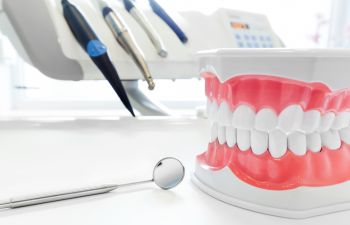Firmly attached to each tooth, gingival tissues or “gums” provide much needed protection for the roots of teeth. Gum tissues are dense, with a good supply of blood vessels beneath a moist surface called the mucous membrane, as explained by Medical News Today. Yet, when individuals begin to experience a loss of these tissues, the gums recede or pull away from the tooth. This is clearly a concern, because fragile parts of the tooth become exposed, meaning they are no longer protected from bacteria and acids from foods. Are your gums receding? Continue reading below to learn about the causes of gum recession and what you can do.
A primary cause of receding gums is poor oral hygiene and periodontal gum disease. Yet, there are other reasons for gum recession, and this includes genetic factors and one’s brushing technique. In other words, an individual might inherit gum tissues that are remarkably thick or otherwise too thin. In turn, a person may have teeth that are severely misaligned. Given these factors, an individual is more susceptible to developing receding gums. On the other hand, even for a person with straight teeth and good oral hygiene, rigorous brushing and/or using a toothbrush with firm bristles can wear away gum tissues. Lifestyle factors and personal choices also play a role in gum recession, including tobacco products, smoking and even mouth piercings.
Gum Recession: Treatment Options
While early treatment for gum recession involves changing one’s brushing style or using a different type of toothbrush, there are many cases that need further treatment.
Because those with receding gums often experience tooth sensitivity, dentists incorporate desensitizing agents as part of a treatment plan. These products simply reduce the sensitivity of the exposed portion of a tooth. Otherwise, if misalignments are causing receding gums, dentists may refer a patient to an orthodontist for repositioning of teeth and thus, the margins of gum tissues.
As another option, dentists use composite materials to cover the surface of a tooth’s root that has become exposed. Similarly, a pink porcelain material can be applied to areas where gum tissues have receded. More advanced cases of gum recession can be treated with gum graft surgery.
Call Grateful Dental Today!
With a practice focus on preventative dentistry, Dr. Leia Porcaro welcomes the opportunity to serve your family. If you find that your gums are receding, and that your teeth are sensitive, Dr. Porcaro wants you to know—there is a suitable treatment for you at Grateful Dental. Call today to schedule your appointment.














